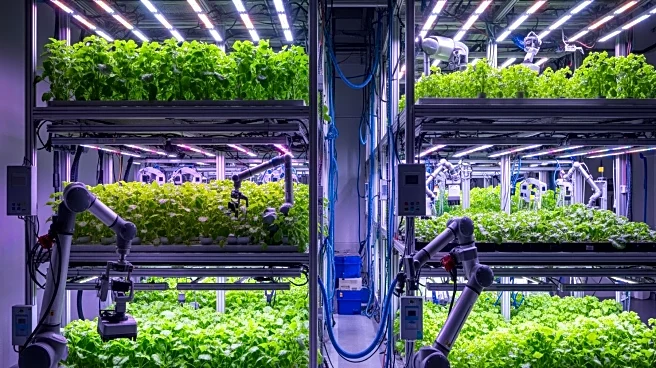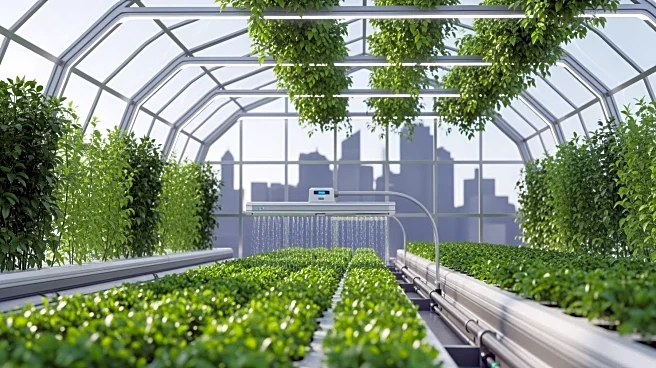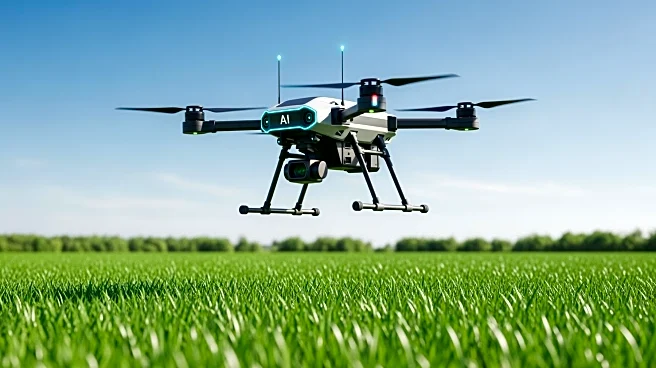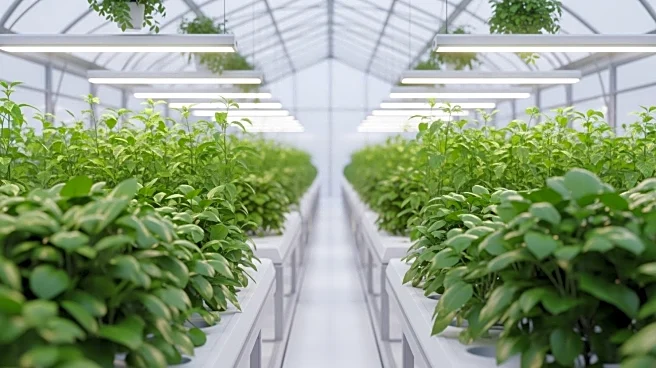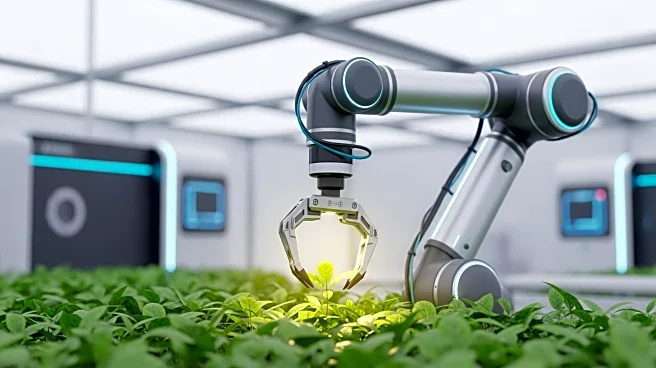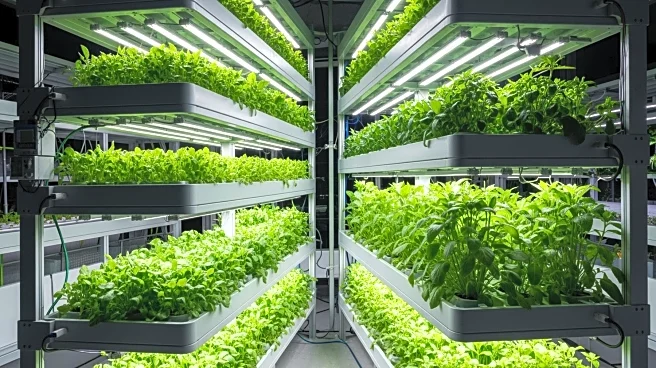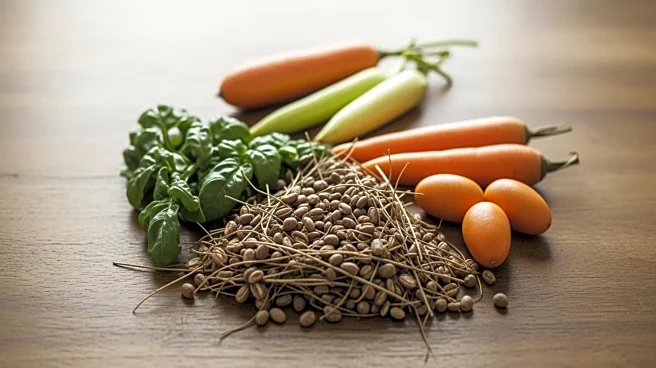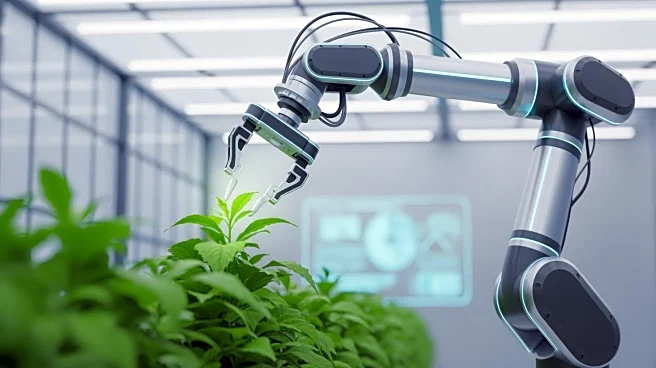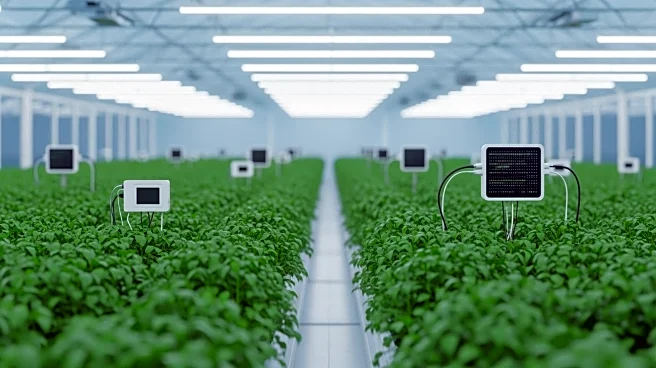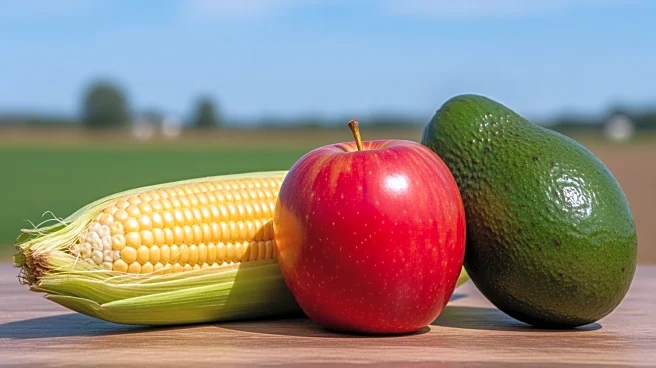What's Happening?
The vertical farming market is experiencing substantial growth, driven by the integration of advanced technologies such as hydroponics, aeroponics, and aquaponics. This method allows for year-round crop
cultivation in controlled indoor environments, significantly reducing land and water usage. The market, valued at USD 8.32 billion in 2025, is projected to reach USD 68.67 billion by 2035, with a compound annual growth rate of 23.5%. North America leads the market, with the United States at the forefront due to technological adoption and consumer demand for locally sourced produce. The approach aligns with global sustainability goals, using up to 95% less water and eliminating the need for pesticides.
Why It's Important?
The rise of vertical farming represents a shift towards sustainable agriculture, addressing food security challenges and environmental concerns. By reducing resource consumption and integrating renewable energy, vertical farming supports global decarbonization efforts. The U.S. market's growth is fueled by technological innovation and consumer preferences for eco-friendly produce. This trend could reshape food production, making it more resilient to climate change and supply chain disruptions. Stakeholders in agriculture, technology, and sustainability stand to benefit from this transformation, while traditional farming may face increased competition.
What's Next?
As vertical farming continues to expand, further advancements in automation and artificial intelligence are expected to enhance productivity and efficiency. Companies are likely to invest in scaling operations and exploring new crop categories. The integration of vertical farms into urban settings could become more prevalent, supporting local food systems and reducing transportation emissions. Policymakers may also play a role in promoting sustainable practices through incentives and regulations.
